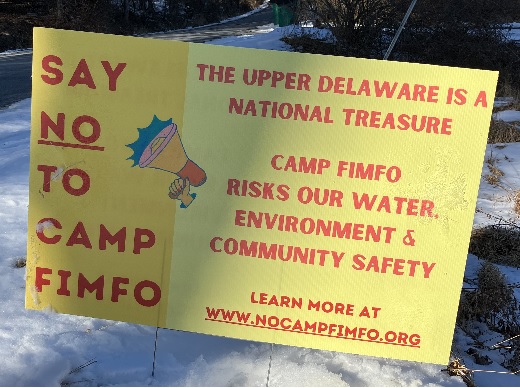A "Sacrifice Zone" for Fracking
May 17, 2013PA DEP Records Show at Least 161 Water Supplies Damaged by Drilling
May 19, 2013By Tom Wilber, Shale Gas Review, May 15, 2013
A Houston company’s pioneering venture into the Marcellus Shale in upstate New York has produced a leaky gas well that the company is trying to fix before abandoning the project or turning it over to another company.
A service crew is now working on the Wetterling Well in the Town of Owego after state inspectors found gas leaking from the ground between the bedrock and the cement casing last fall. Carrizo Oil and Gas drilled the vertical well in October to test the Marcellus Shale. The formation, one of the largest gas reserves in the world, runs from upstate New York through Pennsylvania and into parts of Ohio, West Virginia, and Maryland. Carrizo began the project in the Town of Owego even though New York state is not issuing permits for the kind of horizontal drilling and high volume hydraulic fracturing necessary for commercial production. The permitting moratorium is tied to a review of health and environmental impacts by the state Department of Environmental Conservation, now in its fifth year, and a growing protest movement against shale gas development in New York state.
Problems were first confirmed at the Wetterling well on Oct. 25, according to DEC records, when an inspector, responding to updates from company representatives, found levels of combustible gas leaking from the well bore. The leak averaged about 20 cubic feet per day and was coming from somewhere between the cement casing and the ground – an area known as the annulus. According to the records, a company representative asked the agency last fall if it would be “OK to abandon the well with a vent pipe.”
The DEC inspector, who is not identified by name on paperwork released in response to a Freedom of Information Request to an area resident, reported in notes:
I told him that I did not know and the New York has no specific guidelines about the matter. I went on to say that I have seen other companies re-entering wells of their own accord to fix small leaks. We agreed to continue monitoring the well and that Carrizo would submit an interim plugging report…
The DEC is updating regulations for shale gas as part of the environmental review, called the Supplemental Generic Environmental Impact Statement (SGEIS). In February and March, officials said they expected the report to be issued within weeks. More recently they have said there is no timetable for its completion.
Under current rules, New York state gas well inspectors have broad discretion in interpreting conditions and tailoring enforcement efforts for a given permit. The leak at the Wetterling well was allowed to continue over the winter, before the company began work to fix the problem this spring.
Richard Hunter, vice president of Investor Relations for Carrizo, confirmed that a service crew had set up a rig at the Wetterling site to attempt to locate exactly where gas was leaking from. Hunter explained that crews inserted audio equipment into the hole to listen for the leak – similar to listening for a leak in an inner tube. When they locate the spot, he said, they will “squeeze in more cement” to plug the void between the casing and the ground.
Methane leaks, and the extent to which they are disclosed, have caused major problems for the industry’s image in Pennsylvania. Chronic problems in Dimock, Pa. became a showcase for the anti-fracking movement after methane leaked from production wells into an aquifer used by area residents. The problem became apparent after one water well exploded in 2009, leading to greater public awareness of risks related to shale gas development. The Pennsylvania Department of Environmental Protection has documented dozens of other cases of methane leaks from gas development, some of them fatal.
Industry officials say problems with methane migration from drilling are exaggerated, and point out that methane can leak into water naturally. Hunter said the Owego well was drilled as part of a contract with a company that sold assets to Carrizo. From the beginning, Carrizo planned to plug and abandon the well after testing it, Hunter said, although it could be an asset in future business deals. Carrizo is not likely to pursue development in New York given the regulatory uncertainty, he said. But another company might.
“The thickness, rock quality and everything in the well was very encouraging, and the same kind of thing we are seeing in West Virginia where we are having success,” Hunter said.



